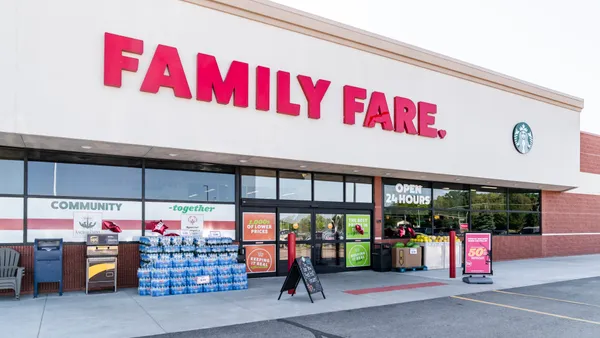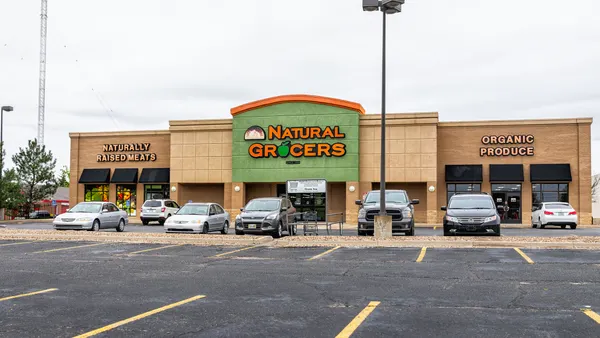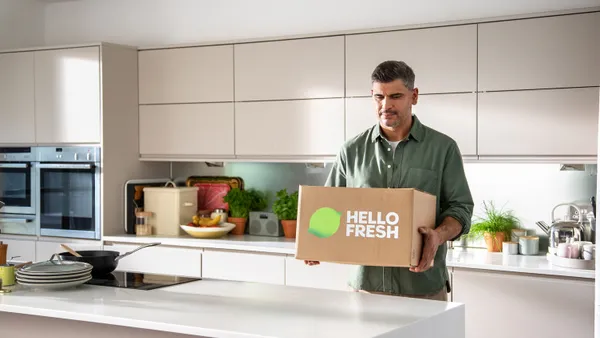Dive Brief:
- Instacart reported strong second-quarter results on Tuesday, as the company’s total revenue, number of orders, gross transaction volume (GTV) and transaction revenue were all up year over year.
- Instacart’s top executives attributed the growth to the company’s rapid innovation pushes, delivery speed and order quality, and focus on omnichannel shopping.
- “Most retailers can't match our pace of innovation on their own, so by integrating with us, they get continuous improvements that drive growth with minimal cost and effort,” CEO Fidji Simo told investors Tuesday.
Dive Insight:
After cutting its teeth in the e-grocery space, Instacart is seeing success in broadening its retailer and ad capabilities to include in-store solutions as it looks to support omnichannel retailing.
For example, customers can now reorder online what they bought with their Caper Carts or bring their online shopping list to the screen of Caper Carts to avoid forgetting ingredients in the store, Simo said during the earnings call.
“Even if we double or triple online grocery penetration, more than two-thirds of grocery shopping will still be in-store,” Simo told investors.
Instacart notched a major win on this front on Tuesday when it announced that all of Aldi’s U.S. stores will deploy several in-store technologies, including digital shelf labels and pickup capabilities.
By ramping up its array of in-store and online technologies, Instacart is “laying the foundation for a massive one-stop-shop, omnichannel retail media network,” Simo said.
She continued: “While it may seem like new retail media networks are popping up left and right, right now, we know that brands have limited time and resources, and they will ultimately want to work with platforms that have scale across all channels.”
During Q2, Instacart saw its GTV increase 10% year over year to just over $8 billion, total revenue grow 15% to $823 million and transaction revenue spike 17% to $595 million. Orders were up 7% year over year to nearly 71 million.
Over the past year, approximately 25 million people used Instacart, Simo said in a letter to shareholders. Instacart is using incentives, its Instacart+ membership and new use cases like restaurants through its Uber Eats partnership to turn infrequent customers into more regular shoppers, Simo said on the call.
As grocery affordability remains a top concern for consumers, Instacart is using loyalty integration, digital circulars and price optimization with retailers to help convince people to use Instacart for their weekly shop, Simo said.
Instacart recently launched a new product that digitizes retailers’ printed grocery circulars. Soon, 90% of customers will have access to three or more digital flyers, which will help fuel more savings, Simo wrote in the shareholder letter, noting that more than 20% of flyer visits currently result in customers adding items to their cart.
Instacart+ members are growing more quickly than all regular monthly active orders, likely due to the value of the membership increasing with the addition of restaurants and partnerships like with Peacock, New York Times and more, Simo said during the investor call. Instacart+ members shop at twice as many retailers as people who aren’t members, she added.
Instacart is continuing to see success with turning a small basket customer into a large basket customer, Simo said.
“We're placing really ambitious bets that will enable us to extend our lead as the leading online grocery marketplace and cement our position as one of the largest omnichannel retail media networks,” Simo said.














